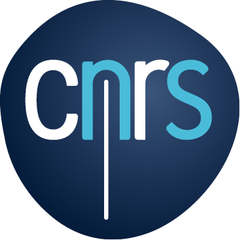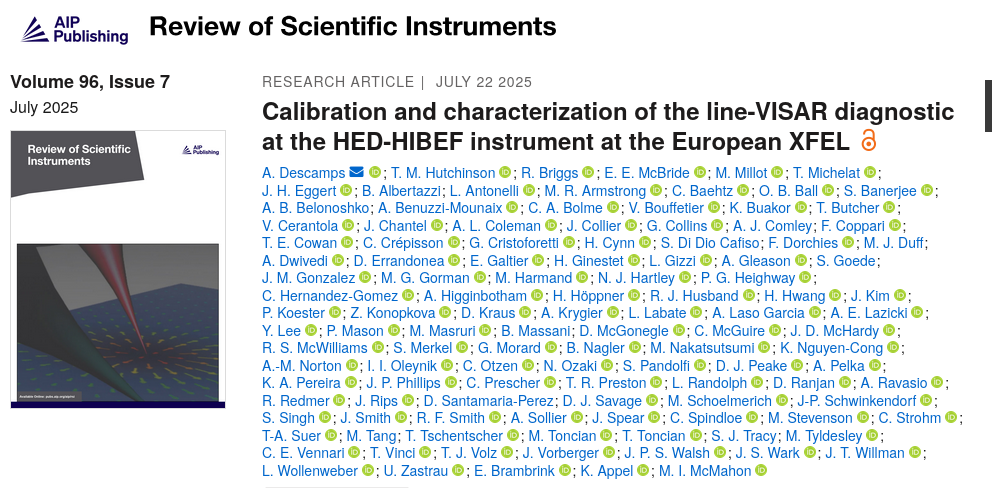Calibration of the VISAR for the HED-HIBEF instrument at the European XFEL
July 2025. A new publication lead by Adrien Descamps at Queen’s University in Belfast provides a procedure to correct VISAR images for geometric distortions and evaluate the performance of the system used to diagnose compression waves during laser-driven shock experiments at the European XFEL.
The line-imaging Velocity Interferometer System for Any Reflector (VISAR) is a well-established diagnostic used to probe the velocity history, including wave profiles derived from dynamically compressed interfaces and wavefronts during dynamic compression experiments.
In 2023, HotCores members were part of the 2740 proposal at the HED instrument of the European XFEL to kikstart laser-driven shock compression experiments using the DiPOLE 100-X laser. The laser pulse can be shaped to launch an ablatively driven shock compression into materials and compress the samples to high pressures and high temperature states. The facility is coupled with the intense X-ray pulses delivered by the EuXFEL. S. Merkel was one of the pillar leaders for this experiment. The work involves a team of over 100 researchers to get started with all diagnostics, instrument calibrations, data processing methods, and obtain the first scientific results.
In this work, Calibration and characterization of the line-VISAR diagnostic at the HED-HIBEF instrument at the European XFEL, published in the Review of Scientific Instruments, Adrien Descamps leads the work to calibrate the VISAR system. provide a procedure to correct VISAR images for geometric distortions, evaluate the performance of the system using Fourier analysis, and discuss the spatial and temporal calibrations of the diagnostic using data on shock-compressed polyimide and silicon.



